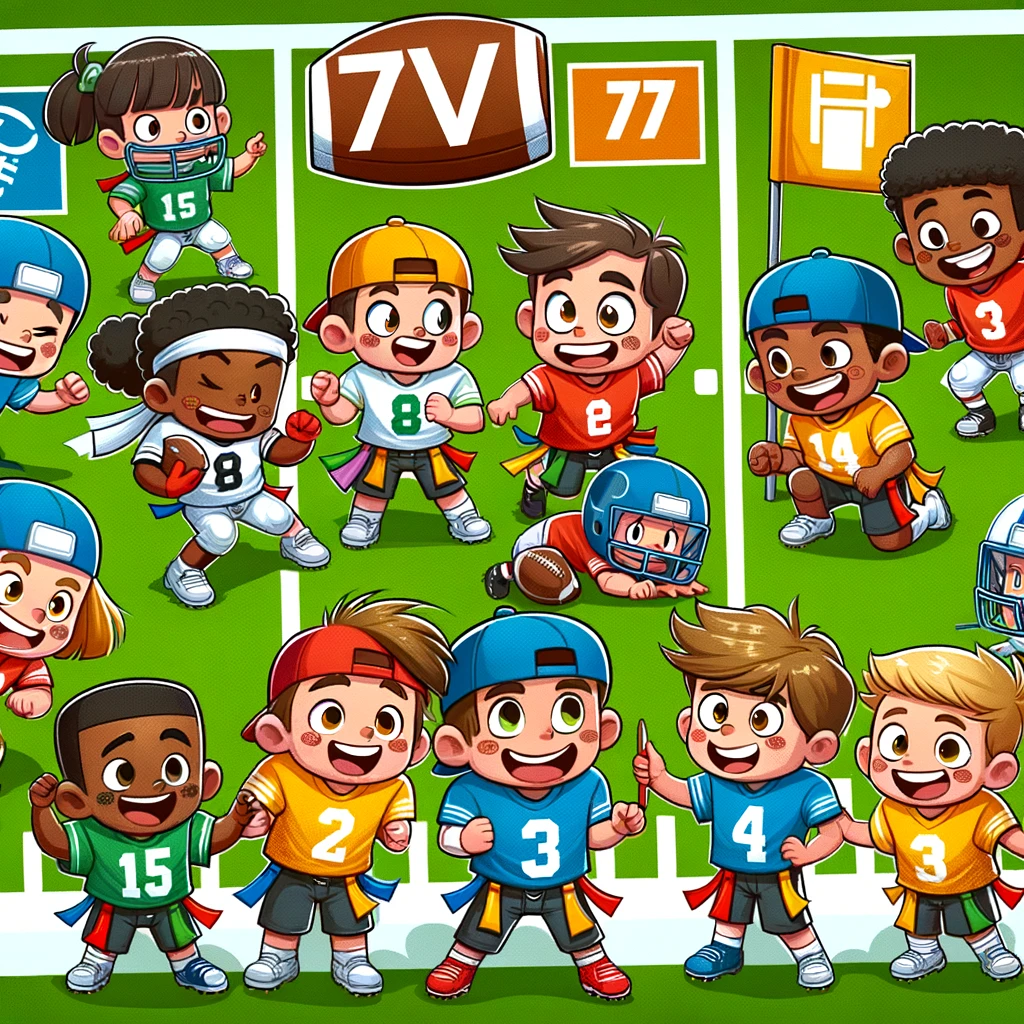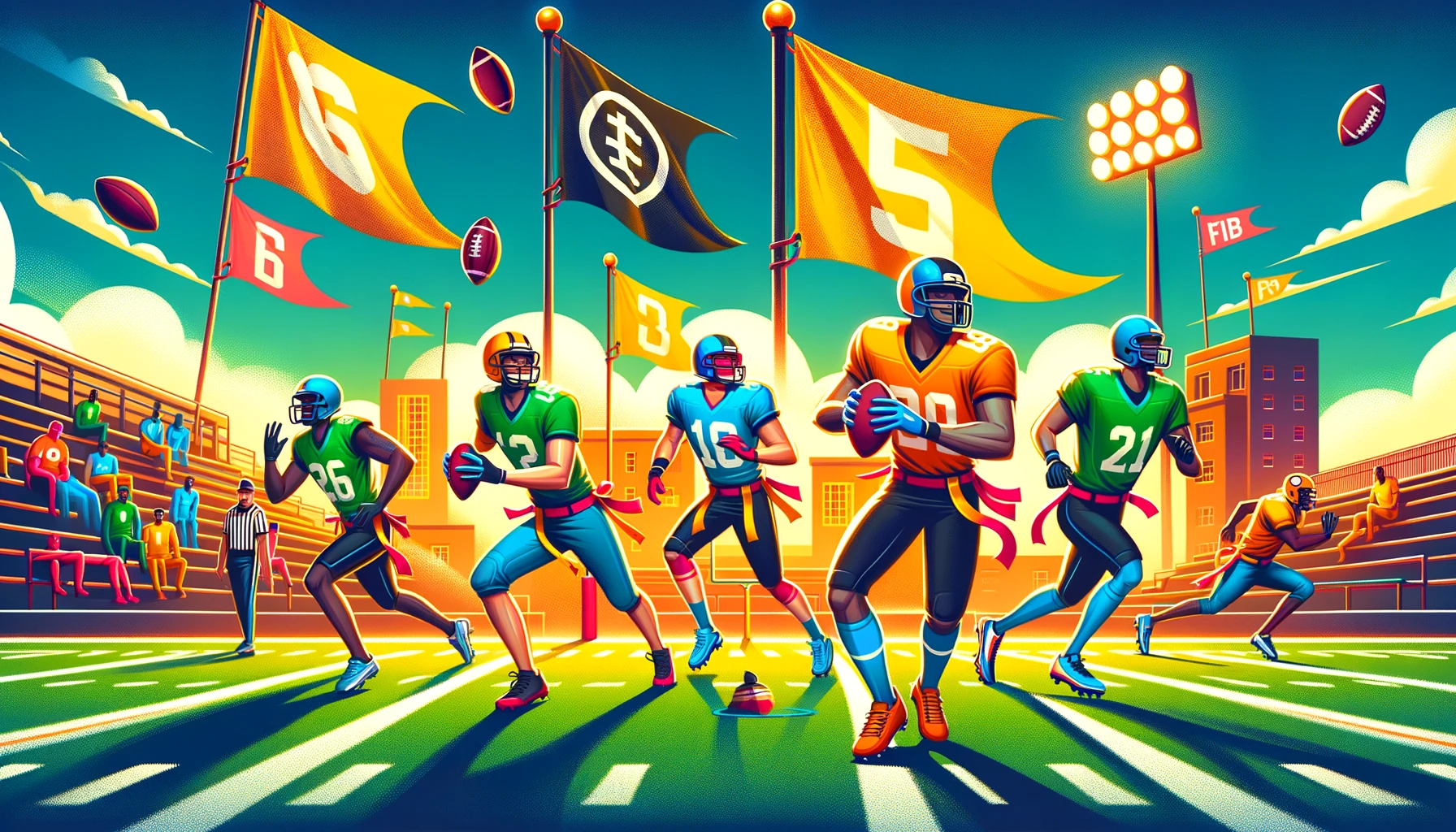Youth Flag Football Positions Explained for Coaches and Parents

Flag football is a popular youth sport that offers the excitement of American football without the same physical contact. In 7v7 flag football, understanding each position is crucial for coaches and parents to help guide young players. Here, we break down the positions in 7v7 flag football, explaining the roles and responsibilities of each to give a clearer understanding of the game.
Offensive Positions
- Quarterback (QB): The quarterback is the leader of the offense. They handle the ball on almost every play and are responsible for throwing passes to receivers, handing the ball off to running backs, and sometimes running with the ball. A good QB must have strong throwing skills and a solid understanding of the game.
- Running Back (RB): The running back’s primary role is to run with the football, but they may also serve as a receiver at times. They need good agility, speed, and the ability to read the defense to find openings for advancing the ball.
- Wide Receiver (WR): Wide receivers are the primary targets for the quarterback’s throws. They must run precise routes, have good hands for catching the ball, and the speed to create separation from defenders.
- Center (C): The center is responsible for snapping the ball to the quarterback. In addition to good snapping skills, the center often plays a role similar to a blocker, helping to protect the quarterback or create space for runners.
- Tight End (TE): The tight end serves as a hybrid between a wide receiver and a blocker. They can catch passes like a receiver and also provide protection and blocking, similar to a lineman in tackle football.
Defensive Positions
- Defensive Back (DB): Defensive backs cover receivers to prevent them from catching passes. They need good speed, agility, and ball skills to either intercept passes or pull the flag of the receiver or ball carrier.
- Linebacker (LB): Linebackers play behind the defensive linemen and are responsible for stopping running plays, covering short passes, and sometimes rushing the quarterback. They must be versatile, able to defend against both the run and the pass.
- Safety (S): Safeties are the last line of defense against both the run and the pass. They help cover deep pass threats and provide support against running plays. Good safeties have a strong understanding of the game, as they often direct other members of the defense.
Strategy and Teamwork
In 7v7 flag football, strategy and teamwork are key. Coaches must devise plays that utilize the strengths of their players, while players need to understand their roles and work together as a unit. For parents, supporting young athletes involves not only cheering them on during games but also helping them understand their responsibilities in their given positions.
Wrapping Up
Understanding the positions in 7v7 flag football is essential for effective coaching and supportive parenting. Each position has unique responsibilities that contribute to the success of the team. By grasping these roles, coaches can better train their players, and parents can offer more insightful support, making the flag football experience enriching and enjoyable for the young athletes involved.

